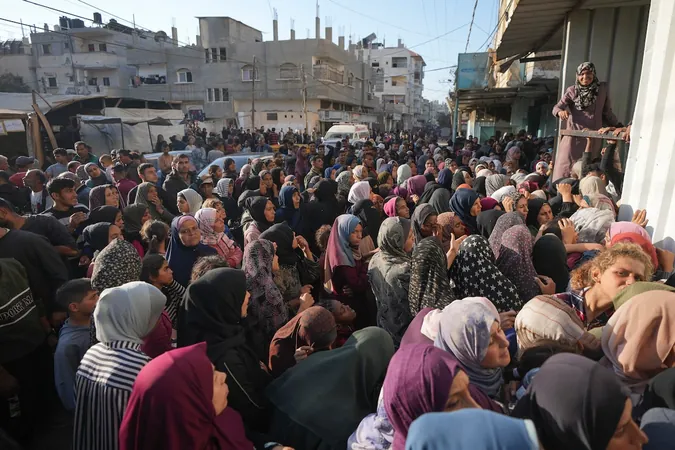
Empowering Women and Girls: The Key to Ending AIDS by 2030
2024-11-27
Author: Charlotte
As we observe World AIDS Day on December 1, we reflect on the tremendous progress made in the fight against HIV/AIDS over the past four decades. From a once fatal diagnosis, HIV has evolved into a manageable chronic illness thanks to significant political will and financial investments, resulting in a remarkable 39% reduction in new infections globally since 2010. However, despite these advancements, the fight is far from over, and there is a pressing need to focus on marginalized communities, particularly women and girls, who continue to face immense barriers in access to prevention and care.
The theme for the upcoming 2024 World AIDS Day—“Take the rights path”—calls on global leaders to adopt a human rights framework in their efforts to eliminate inequalities hindering progress in eradicating AIDS. Alarmingly, women and girls accounted for 62% of new HIV infections in Sub-Saharan Africa in 2023, representing a staggering 44% of new infections worldwide. This disproportionate impact is tied to deep-rooted gender inequalities that restrict women’s essential roles in society across economic, social, and cultural spheres.
Adolescent girls and young women, in particular, are at a heightened risk of contracting HIV, often due to relationships with older partners and harmful practices like child marriage. The issue is further compounded by inadequate education about HIV, which undermines women's ability to make informed choices about their sexual health and limit risky behavior.
Additionally, stigma remains a formidable obstacle. Gender-based violence and intimate partner violence not only perpetuate stigma but also discourage women from seeking necessary prevention, treatment, or disclosure of their HIV status. Particularly during pregnancy, those living with HIV encounter heightened discrimination, making it crucial to address these societal biases to improve access to healthcare.
Moreover, draconian laws criminalizing HIV exposure, transmission, or non-disclosure exacerbate stigma and discrimination, disproportionately affecting marginalized groups, especially women and girls. Such legal barriers significantly impede their ability to access vital health services for both the prevention and treatment of HIV.
To combat this epidemic, innovative preventive measures are vital. Pre-exposure prophylaxis (PrEP) is one effective strategy, yet women face obstacles in maintaining the required daily regimen due to various factors, including distance from clinics and stigma around PrEP usage. Exciting developments, such as the dapivirine vaginal ring—a discreet, highly effective prevention method—show promise. Notably, a recent clinical trial for lenacapavir, an injectable drug administered twice a year, alongside ongoing training for the previously launched injectable cabotegravir, heralds a new dawn for reliable HIV prevention methods tailored specifically for women and girls.
Global investment is essential in shifting the focus towards women and girls in HIV-related strategies and policies. U.S. leadership within initiatives like The President’s Emergency Plan for AIDS Relief (PEPFAR) has been pivotal in changing the course of the global HIV epidemic. The DREAMS (Determined, Resilient, Empowered, AIDS-free, Mentored, and Safe) Partnership has played a crucial role, achieving a 25% decrease in new HIV diagnoses among adolescent girls and young women in regions where it operates. The upcoming DREAMS NextGen initiative promises to enhance this approach by empowering young women and tackling gender inequalities more effectively.
As we move closer to 2030, commitment towards empowering women and girls must be unwavering. Their journey towards sovereignty over their sexual health is not only a human rights issue but also a critical component in the global fight against AIDS. Together, we can pave the way for a healthier, AIDS-free future for all. Stay informed and involved—our collective action is crucial now more than ever!









 Brasil (PT)
Brasil (PT)
 Canada (EN)
Canada (EN)
 Chile (ES)
Chile (ES)
 España (ES)
España (ES)
 France (FR)
France (FR)
 Hong Kong (EN)
Hong Kong (EN)
 Italia (IT)
Italia (IT)
 日本 (JA)
日本 (JA)
 Magyarország (HU)
Magyarország (HU)
 Norge (NO)
Norge (NO)
 Polska (PL)
Polska (PL)
 Schweiz (DE)
Schweiz (DE)
 Singapore (EN)
Singapore (EN)
 Sverige (SV)
Sverige (SV)
 Suomi (FI)
Suomi (FI)
 Türkiye (TR)
Türkiye (TR)